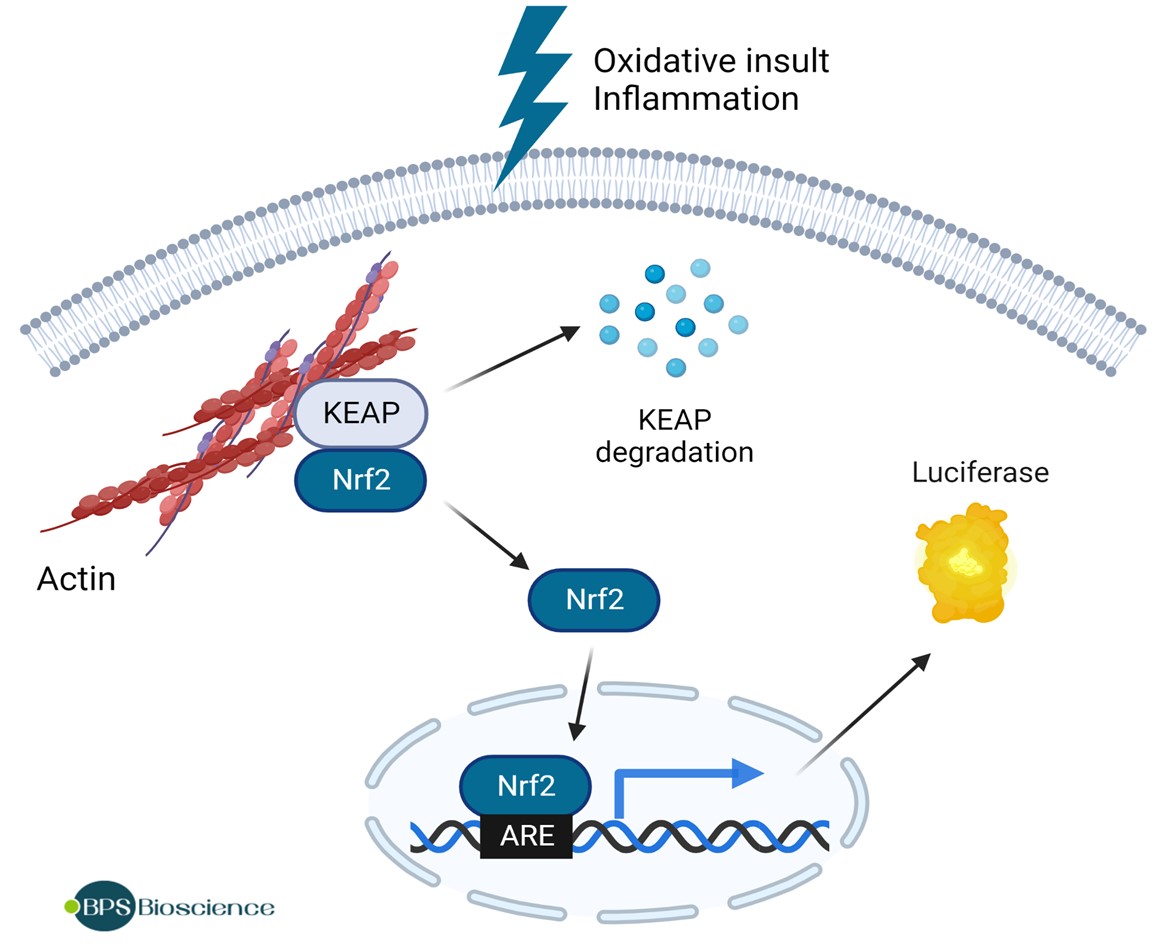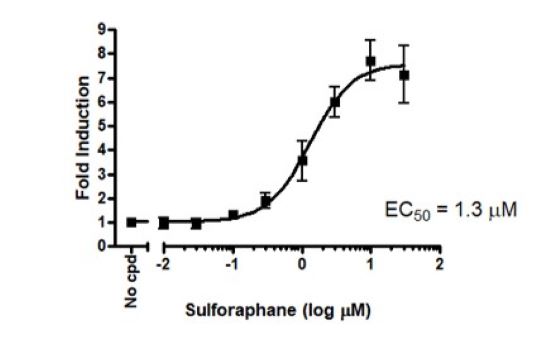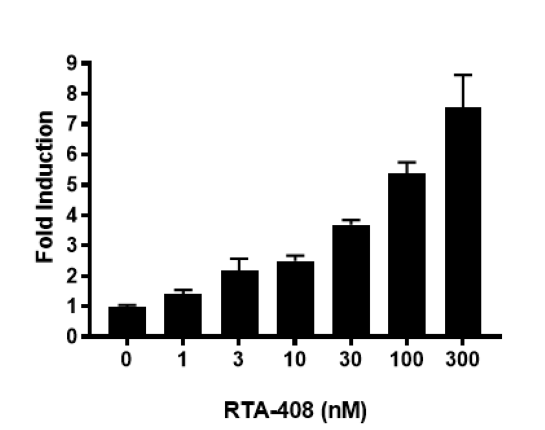ARE Luciferase Reporter HepG2 Cell Line (Nrf2 Antioxidant Pathway)
The antioxidant response element (ARE) Luciferase Reporter HepG2 hepatic cell line contains a stably integrated firefly luciferase reporter under the control of ARE, which is recognized by the transcription factor Nuclear factor erythroid 2-related factor 2 (Nrf2). Luciferase expression correlates with activation of Nrf2 and the antioxidant pathway. This cell line was validated by stimulation with tert-butylhydroquinone, sulforaphane, and RTA-408 (omaveloxone).

Figure 1: Illustration of the ARE Luciferase Reporter HepG2 Cell Line (Nrf2 Antioxidant Pathway) mechanism.
Interested in screening and profiling inhibitors or activators of the Nrf2 signaling pathway without the need to purchase and license the cell line? Check out our Cell Signaling Pathway Screening.
This product has been cited 44 times.
Purchase of this cell line is for research purposes only; commercial use requires a separate license. View the full terms and conditions.
Media Required for Cell Culture
| Name | Ordering Information |
| Thaw Medium 1 | BPS Bioscience #60187 |
| Growth Medium 1k | BPS Bioscience #79533 |
Materials Used in the Cellular Assay
| Name | Orderinig Information |
| Tert-butylhydroquinone | Signma #112941 |
| DL-Sulforaphane | Sigma #S4441 |
| RTA-408 (Omaveloxolone) | MedChemExpress #HY-12212 |
| ONE-Step™ Luciferase Assay System | BPS Bioscience #60690 |
| White clear-bottom 96-well cell culture plate | |
| Luminometer |
The cell line has been screened to confirm the absence of Mycoplasma species.
Nrf2 is a transcription factor activated in response to toxic and oxidative drugs and chemicals. Under normal conditions, Nrf2 is retained in the cytosol through its binding to the cytoskeletal protein Kelch-like ECH-associated protein 1 (Keap1). Nrf2 is released from Keap1 upon oxidative stress and translocates to the nucleus, where it binds to the ARE promoter region of genes involved in the oxidative stress response and in drug detoxification, including genes encoding antioxidant enzymes that protect the cell from oxidative damage. Nrf2 supports cellular resistance to carcinogens and to inflammation, and dysfunction can lead to neurological diseases such as Alzheimer disease, Parkinson’s and Huntington’s diseases and amyotrophic lateral sclerosis (AMS). Its function is particularly important in the liver, where it contributes to protection against viral hepatitis and alcoholic and nonalcoholic liver disease. Molecules able to interact with Nrf2 and enhance is protective role are of great interest in medicine.
Cuadrado A, et al. 2019 Nature Rev. Drug Discovery, 18: 295-317.
Zgorzynska E., et al., 2021 Int J Mol Sci, 22(17): 9592.




